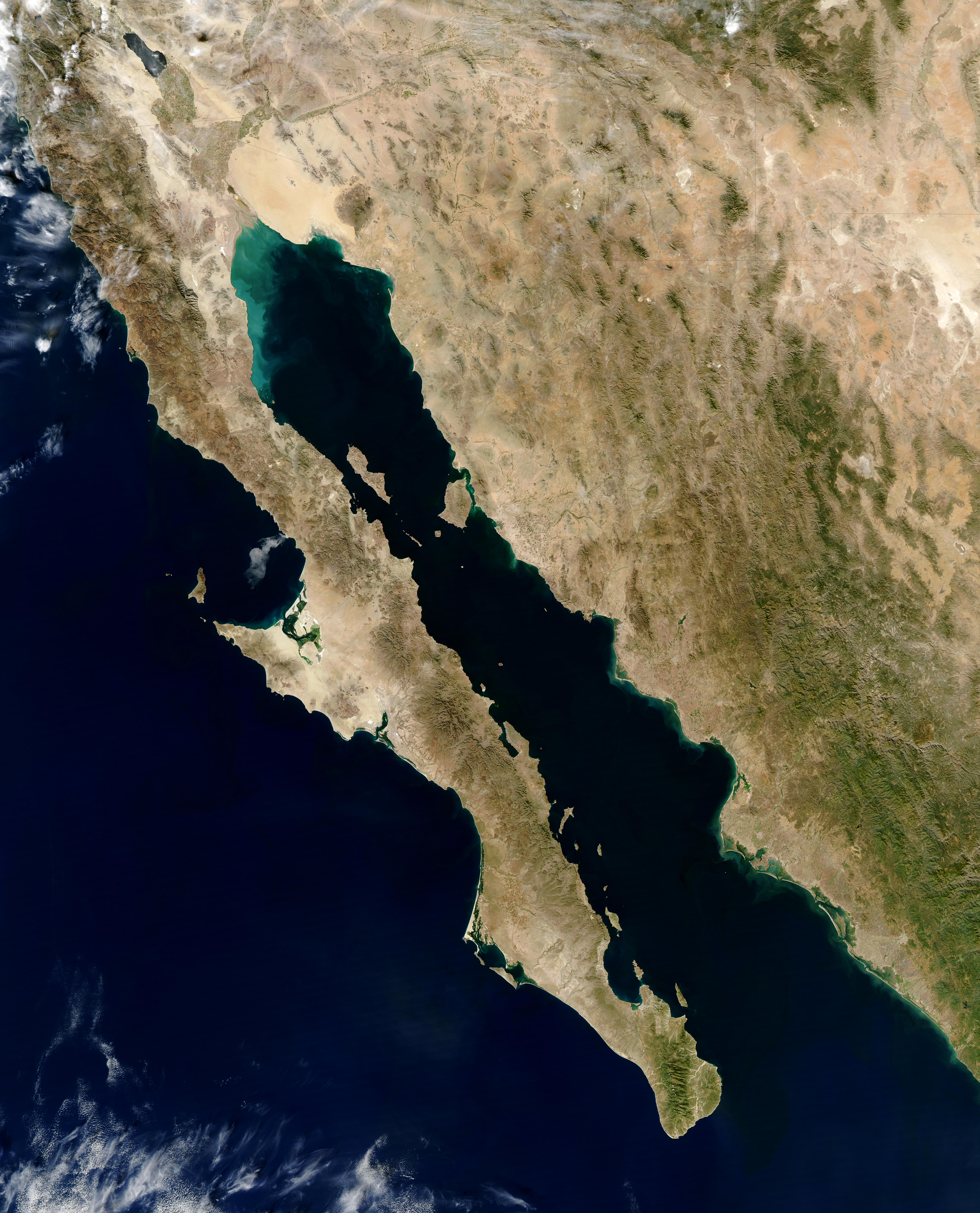|
Carmen Basin
The Carmen Basin is a submarine depression located on the seabed at the southern end of the Gulf of California. The basin results from the activity of one of the several spreading centers in the Gulf. The basin is linked to the Farallon Fault to the south, and the Carmen Fault The Carmen Fault is a right lateral-moving transform fault located on the seafloor of the southern Gulf of California. It links the Guaymas Basin to the north with the Carmen Basin to the south. All these features are part of the Gulf of California ... in the north. References ''Continent-Ocean Transition Across the Alarcon Basin, Gulf of California from Seismic Reflection and Refraction Data'', Sutherland et al (2003) Geology of Mexico Depressions of Mexico {{tectonics-stub ... [...More Info...] [...Related Items...] OR: [Wikipedia] [Google] [Baidu] |
Depression (geology)
In geology, a depression is a landform sunken or depressed below the surrounding area. Depressions form by various mechanisms. Types Erosion-related: * Blowout: a depression created by wind erosion typically in either a partially vegetated sand dune ecosystem or dry soils (such as a post-glacial loess environment). * Glacial valley: a depression carved by erosion by a glacier. * River valley: a depression carved by fluvial erosion by a river. * Area of subsidence caused by the collapse of an underlying structure, such as sinkholes in karst terrain. * Sink: an endorheic depression generally containing a persistent or intermittent (seasonal) lake, a salt flat (playa) or dry lake, or an ephemeral lake. * Panhole: a shallow depression or basin eroded into flat or gently sloping, cohesive rock.Twidale, C.R., and Bourne, J.A., 2018Rock basins (gnammas) revisited.''Géomorphologie: Relief, Processus, Environnement,'' Vol. 24, No. 2. January 2018. Retrieved 9 June 2020. ... [...More Info...] [...Related Items...] OR: [Wikipedia] [Google] [Baidu] |
Gulf Of California
The Gulf of California ( es, Golfo de California), also known as the Sea of Cortés (''Mar de Cortés'') or Sea of Cortez, or less commonly as the Vermilion Sea (''Mar Bermejo''), is a marginal sea of the Pacific Ocean that separates the Baja California Peninsula from the Mexican mainland. It is bordered by the states of Baja California, Baja California Sur, Sonora, and Sinaloa with a coastline of approximately . Rivers that flow into the Gulf of California include the Colorado, Fuerte, Mayo, Sinaloa, Sonora, and the Yaqui. The surface of the gulf is about . Maximum depths exceed because of the complex geology, linked to plate tectonics. The gulf is thought to be one of the most diverse seas on Earth and is home to more than 5,000 species of micro-invertebrates. Parts of the Gulf of California are a UNESCO World Heritage Site. Geography History The marine expeditions of Fortún Ximénez, Hernán Cortés, Juan Rodríguez Cabrillo, Francisco de Ulloa, Hernando de Alarc� ... [...More Info...] [...Related Items...] OR: [Wikipedia] [Google] [Baidu] |
Farallon Fault
The Farallon Fault is a right lateral-moving transform fault located on the seafloor of the southern Gulf of California. It links the Carmen Basin to the north with the Farallon Basin to the south. All these features are part of the Gulf of California Rift Zone, the northern extension of the East Pacific Rise The East Pacific Rise is a mid-ocean rise (termed an oceanic rise and not a mid-ocean ridge due to its higher rate of spreading that results in less elevation increase and more regular terrain), a divergent tectonic plate boundary located alon .... References A history of continental rifting at the mouth of the Gulf of California, Ness and Lyle (1981) {{Central America plates Geology of Mexico Seismic faults of Mexico ... [...More Info...] [...Related Items...] OR: [Wikipedia] [Google] [Baidu] |
Carmen Fault
The Carmen Fault is a right lateral-moving transform fault located on the seafloor of the southern Gulf of California. It links the Guaymas Basin to the north with the Carmen Basin to the south. All these features are part of the Gulf of California Rift Zone, the northern extension of the East Pacific Rise The East Pacific Rise is a mid-ocean rise (termed an oceanic rise and not a mid-ocean ridge due to its higher rate of spreading that results in less elevation increase and more regular terrain), a divergent tectonic plate boundary located along .... A magnitude 6.3 earthquake occurred along the Carmen Fault on January 19, 2017. References Seismic faults of Mexico {{tectonics-stub ... [...More Info...] [...Related Items...] OR: [Wikipedia] [Google] [Baidu] |
Geology Of Mexico
The geography of Mexico describes the geographic features of Mexico, a country in the Americas. Mexico is located at about 23° N and 102° W in the southern portion of North America. From its farthest land points, Mexico is a little over in length. Mexico is bounded to the north by the United States (specifically, from west to east, by California, Arizona, New Mexico, and Texas), to the west and south by the Pacific Ocean, to the east by the Gulf of Mexico, and to the southeast by Belize, Guatemala, and the Caribbean Sea. The northernmost constituent of Latin America, it is the most populous Spanish-speaking country in the world. Mexico is the world's 13th largest country, three times the size of Texas. Almost all of Mexico is on the North American Plate, with small parts of the Baja California Peninsula in the northwest on the Pacific and Cocos Plates. Some geographers include the portion east of the Isthmus of Tehuantepec including the Yucatán Peninsula within North A ... [...More Info...] [...Related Items...] OR: [Wikipedia] [Google] [Baidu] |


